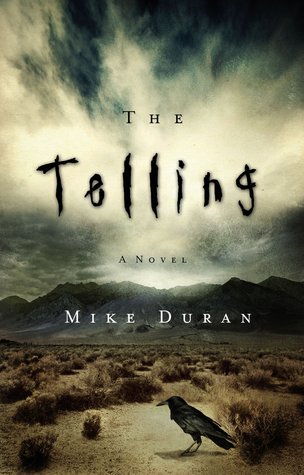‘The Telling’: Would I Read It Again?
As they parted, Little Weaver exhorted them again. “The light—the dark angels hate the light. Go home and turn on every light in your house. The shadows are their essence, and the Holy One is their bane. When morning dawns, open all the blinds. And in your hearts—aha!—unfurl the shutters,” He laughed.
— The Telling, page 187
The Telling by Mike Duran effectively draws you into the town of Endurance and its creepy science experiments that hold supernaturally explosive consequences.
 Zeph Walker was the Prophet of the Plains—the child who could prophesy death and life like the prophets of old. His mother’s death and his step-mother’s fury left the power—the Telling—dark and unresponsive when at his mother’s grave he renounced it all. But the remnant watches this boy grow into a man. He moves back to Endurance, buys some property, and keeps the book swap open. Zeph keeps his scarred face turned away from people, preferring the isolation of his property. It’s easier that way.
Zeph Walker was the Prophet of the Plains—the child who could prophesy death and life like the prophets of old. His mother’s death and his step-mother’s fury left the power—the Telling—dark and unresponsive when at his mother’s grave he renounced it all. But the remnant watches this boy grow into a man. He moves back to Endurance, buys some property, and keeps the book swap open. Zeph keeps his scarred face turned away from people, preferring the isolation of his property. It’s easier that way.
Then, Endurance begins to change. The Marvale Manor has residents who are changing, and Annie tries to explain to her granddaughter, Tamra, that it’s the Madness of Endurance all over again. A prophecy is coming true and the ninth gate of hell trembles on the verge of splitting the land wide open with an army of dark angels. Only one man can stand in its way.
And I thought that man was Zeph Walker. That’s where it got a little confusing. Mike Duran built up Zeph throughout the novel and I expected a big scene where Zeph in the caverns would be the one who stopped the dark army. The ending disappointed me a little because Zeph Walker’s build up seemed to sizzle. It’s Little Weaver who shines and stands to save the town of Endurance. And yet, Zeph has a part to play, too.
“Do you remember how you said the dark angels feed on our regrets, our disappointment? It’s like the darkness inside of us is their magnet, then I’m like a twelve-course meal. As long as I hold onto this garbage, let this fear, this bitterness eat me up—as long as I keep runnin’—they have power here. I can’t stand before them.” He gestured toward Otta’s Rift.
— page 246
Mike Duran crafts the story so it chills you, building the suspense, bringing you reluctantly closer to the ninth gate of hell. It seems like, in my opinion, that he uses a lot of new age and occult information combined with scripture, but in a way where I only question it once. Should we so blatantly use scripture to manipulate a fictional prophecy? It’s uniquely and masterfully done that it’s almost believable. Mike Duran realistically portrays the personality of Death Valley and its surrounding towns, made up or real.
Lastly, the way he uses the old marquee at the town’s abandoned theater to be prophetic in itself leaves Endurance haunted by its legend as if the supernatural stirs still in the dry dust of Endurance long after the army of dark angels has been vanquished.
I gave the novel four stars for great story telling, but struggled justifying a five because of the realistic use of scripture in a false prophecy that I have never read yet in a novel. In the past, novels have explored theologies in fiction, but this mix of the occult, new age, and scripture felt new to me. Would I read this again?
I don’t know.
(Originally published at TheWriteLife2.Wordpress.com as part of the Christian Science Fiction and Fantasy Book Tour.)




































